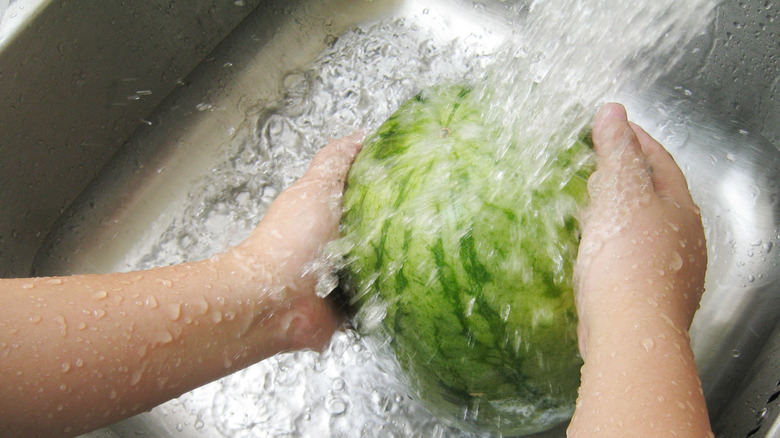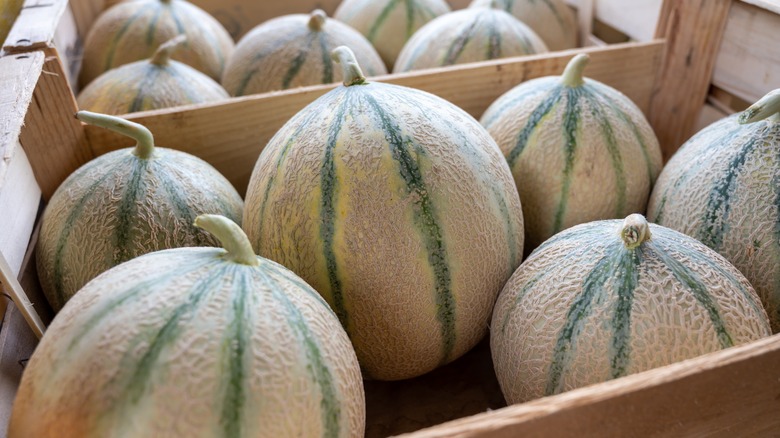Why You Should Always Rinse Melon
Harmful bacterial pathogens such as salmonella and listeria are among the most common causes of contaminated food and foodborne illnesses. This is important to keep in mind, since, according to the U.S. Centers for Disease Control and Prevention (CDC), contaminated food accounts for nearly 48 million illnesses and over 3,000 deaths in the U.S. each year. It's also why the CDC recommends that you rinse your fruits and vegetables before eating them.
Yes, this includes melons like cantaloupes, honeydews, and watermelons. As the CDC confirms, even when you're not consuming the peel or rind, fruit can still be contaminated if not rinsed properly. Reader's Digest concurs, noting that foodborne pathogens like salmonella and listeria can easily be transferred from the outside portion of fruit to the inside, where the edible part resides, if proper cleaning techniques are not observed.
"My clients are surprised when I tell them to wash melons before they cut them—and to avoid pre-cut melons," author and registered dietician and nutritionist Lauren Manaker told the outlet. "People do not immediately think about washing the rind of their melons before cutting them, because they only eat the inside."
The proper way to clean and rinse melons
So, what is the proper way to rinse or clean fruit like melons in order to avoid any potential contamination? The CDC advocates washing your hands with soap before you begin any food preparation, but cautions against using soaps or solutions on your fruits or vegetables. Running water and using a scrub brush are all you'll need to ensure the safety of your melon.
The scrub brush is essential because it allows you to thoroughly scrub away harmful bacteria or residue; an especially important consideration for notoriously tough to clean produce like melons and potatoes, notes the Pittsburgh Post-Gazette. After rinsing and cleaning the melon, dry it with a towel, recommends Dr. Amy Simmone of the University of Florida Department of Family Youth and Community Sciences and then return the melon or cut pieces to the refrigerator until mealtime.
Refrigeration keeps the melon out of what the U.S. Department of Agriculture (USDA) calls the "danger zone," meaning temperatures between 40 and 140 degrees F that are conducive to the growth of harmful bacteria such as salmonella and listeria. After cleaning is complete, per the CDC, sanitize your prep areas, including sinks, countertops and cutting boards.
Proper food handling may not be sexy, but it will keep you safe.

